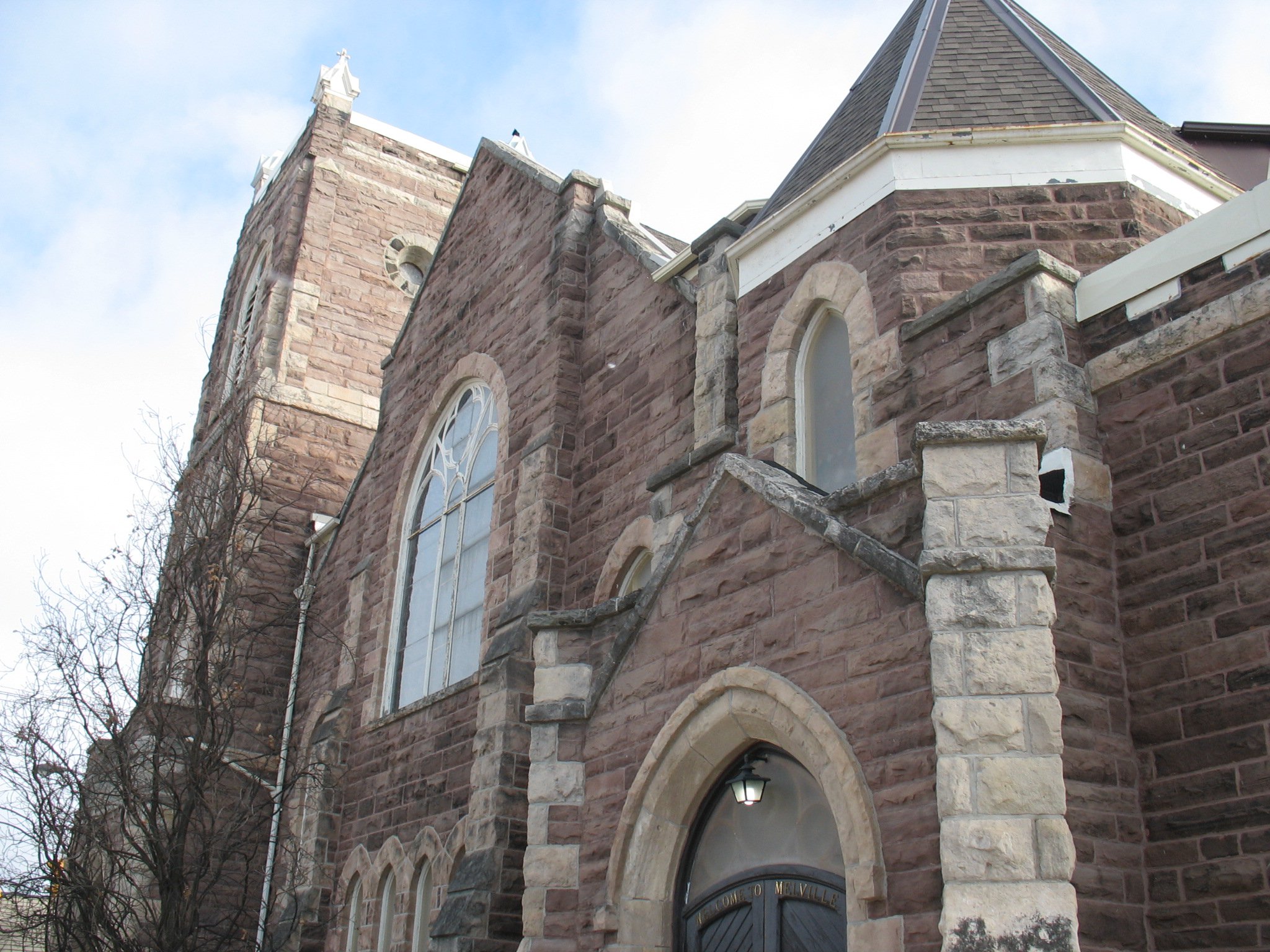A Brief History

Melville began in 1845, as a result of a deep disruption within the ranks of the Presbyterian church in Scotland that spread to Canada. St. Andrew’s, the original (and still existing) Presbyterian congregation in Fergus, was severely shaken by the controversy. Its pastor, Rev. George Smellie, all but one of the elders, and a large majority of his parishioners, broke away from St. Andrew’s and became associated with the “Free Kirk” (church), Melville.
Thus, Melville Church, named after Andrew Melville, a Presbyterian reformer, was born. The fledgling assembly was permitted to worship within the sanctuary of St. Andrew’s until the first Melville edifice was officially opened on March 4, 1847. The location of “Old Melville” as it was later called, was next to the present site of the tennis courts on Union Street West, and with several additions provided adequate accommodations for the worshipers for more than fifty years.
In the 1890s, it became necessary to build a more spacious facility, resulting in the present structure of Credit Valley stone. The cornerstone reads 1899, and Melville officially opened on May 13, 1900. From 1845 to 1925, the pastoral duties were resolutely performed by four regular ministers: Dr. George Smellie (1845-1888); Rev. R.M. Craig; Rev. John H. MacVicar; and Rev. R.W. Craw.
In 1925, the United Church of Canada was formed as a result of a merger among the Presbyterian Church of Canada, the Methodist Church of Canada, the Congregational Union of Ontario and Quebec, and the Association of Local Union Churches. In Fergus, the merger brought together Melville and Wesley Methodist Church (formed in 1852) under Melville’s roof. A Christian Education wing called Melville Hall, which includes the Wesley Chapel, opened in 1931.
Melville continues into the 21st century as a thriving congregation, proud of its past and looking forward to its future.